Digital Poster
Neurodegeneration Non-AD & -PD
ISMRM & ISMRT Annual Meeting & Exhibition • 10-15 May 2025 • Honolulu, Hawai'i

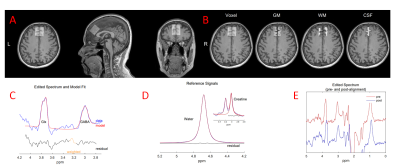 |
Computer Number: 113
2977. Relationship
of glymphatic markers, neurotransmitters with cognitive
performance in cerebral small vessel disease: A novel
investigation
C. Ma, A. Liu, X. Wang, F. Cong, L. Lin, P. Sun, Y. Li, J.
Liu
Dalian University of Technology, Dalian, China
Impact: Our study provided evidence that both the GABA+
level and CSVD image maskers were associated with glymphatic
dysfunction in CSVD patients
|
|
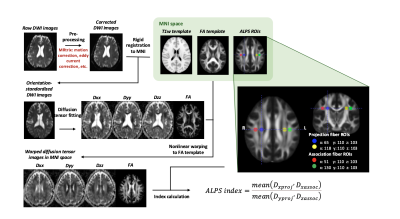 |
Computer Number: 114
2978. Glymphatic
Dysfunction in Huntington’s Disease: DTI-ALPS as a Biomarker for
Progression and Symptom Severity
A. Solomon, Z. Wang, J. Yao
University of California, Los Angeles, Los Angeles, United States
Impact: This research positions DTI-ALPS reduction as a
promising biomarker for glymphatic dysfunction in HD,
correlating with disease severity and symptoms. DTI-ALPS
could enhance understanding of HD pathogenesis, support
clinical monitoring of glymphatic dysfunction, and
potentially inform targeted interventions.
|
|
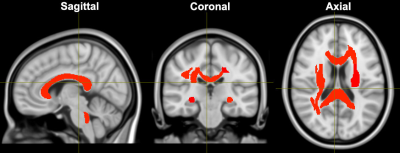 |
Computer Number: 115
2979. Investigating
the Impact of Presurgical White Matter Microstructure on
Surgical Outcomes of VIM-DBS in Essential Tremor
S. Chung, H. N. Song, Y. Lui, B. Kopell, K. S. Choi
New York University Grossman School of Medicine, New York, United States
Impact: Our findings highlight presurgical diffusion
imaging as a sensitive predictor of DBS outcomes in ET
patients, offering potential quantitative biomarkers to
guide personalized surgical planning and enhance treatment
outcomes.
|
|
 |
Computer Number: 116
2980. Striatal
microstructural abnormalities in Huntington’s disease revealed
by soma and neurite density imaging
M. Palombo, V. Ioakeimidis, R. Schubert, P. Pallmann, M.
Busse, C. Casella, C. Drew, A. Rosser, C. Metzler-Baddeley
Cardiff University, Cardiff, United Kingdom
Impact: Soma and Neurite Density Imaging (SANDI) is
sensitive to striatal neurodegeneration in Huntington’s
disease (HD). SANDI indices have the potential for in vivo
biomarkers of HD pathology and surrogate clinical outcome
measures for disease-modifying therapeutics in future
clinical trials.
|
|
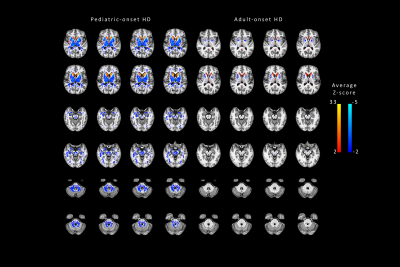 |
Computer Number: 117
2981. Quantitative
characterization of brain tissue damage in Huntington Disease
using T1 normative atlas
M. E. Caligiuri, M. C. Bonacci, V. Ravano, G. F. Piredda, D.
Zacà, A. Burrus, B. Maréchal, T. Hilbert, T. Kober, F.
Squitieri, U. Sabatini
Università degli Studi Magna Graecia di Catanzaro, Catanzaro, Italy
Impact: Identification of specific regions of
quantitative T1 abnormalities in different forms of
Huntington disease may provide precious insights into
pathophysiological mechanisms driving the different clinical
presentations, as well as a promising biomarker to
non-invasively monitor response to novel therapeutic
strategies.
|
|
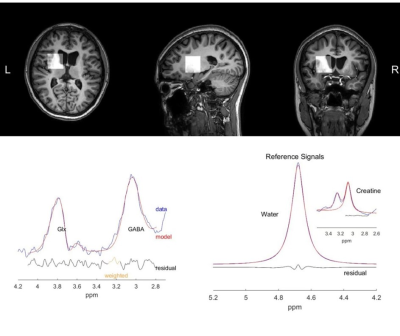 |
Computer Number: 118
2982. Reduced
gamma-aminobutyric acid concentration is associated with
physical disability in s Wilson disease
X. Wang, N. Tan, Z. Su, L. Fu, R. Xu
Guizhou Provincial People's Hospital, Guiyang, China
Impact: These findings improve our understanding of WD
and its severity. Future research should explore how copper
chelation therapy affects CSTC pathways and whether
restoring GABAergic function can help alleviate neurological
deficits.
|
|
 |
Computer Number: 119
2983. MRI
imaging of myelin and iron in Huntington’s Disease
J. Athertya, J. Lo, S. H. Shin, K. Bagga, Y. Ma, H. Tang, G.
Bydder, J. Corey-Bloom, J. Du
Department of Radiology, UCSD, San Diego, United States
Impact: The STAIR-UTE, UTE-QSM and dSIR techniques can
detect myelin loss, iron accumulation, and morphological
changes in HD, respectively, and may help with early
diagnosis and treatment monitoring of HD.
|
|
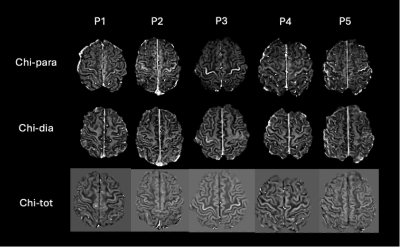 |
Computer Number: 120
2984. Iron
Deposition Versus Demyelination: Chi-Separation Insights into
Increased Magnetic Susceptibility in ALS Motor Cortex
S. Zhou, H. Kameda, Y. Bito, N. Kinota, D. Kato, T. Fujii,
X. Bai, S. Ji, K. Min, J. Lee, K. Kudo
Hokkaido University, Sapporo, Japan
Impact: This research clarifies the underlying mechanism
driving changes in χ values in ALS using Chi-separation,
emphasizing the predominant role of iron deposition over
demyelination. Such insight highlights its potential for
better understanding and potentially monitoring ALS
progression.
|
|
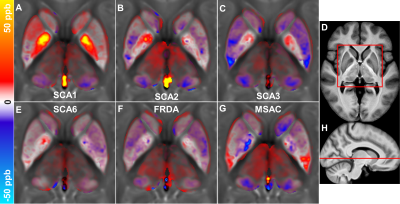 |
Computer Number: 121
2985. Susceptibility-based
investigation of deep gray matter in common types of
degenerative cerebellar ataxias
A. Deistung, S. Graf, D. Jäschke, S. Göricke, W. Wohlgemuth,
D. Timmann
University Hospital Halle (Saale), Halle (Saale), Germany
Impact: This exploratory cross-sectional study
contributes to the ongoing investigations of iron
metabolism’s role in cerebellar ataxias, showing the
involvement of various deep gray matter regions in the
midbrain and cerebrum across common types of degenerative
cerebellar ataxias.
|
|
 |
Computer Number: 122
2986. 1H-MRSI
of the Deep Gray Matter Nuclei in Patients With Amyotrophic
Lateral Sclerosis
A. Canbaş, G. H. Hatay, M. Torlak, B. İşak, A. Özcan, D.
Kaya, A. Dinçer, E. Öztürk Işık
Boğaziçi University, İstanbul, Turkey
Impact: This study demonstrated that alterations in
tNAA/tCr, Tau/tCr, and Glu/tCr ratios could enhance the
understanding of ALS pathophysiology in distinct regional
and limb onset groups and potentially contribute to future
treatment planning.
|
|
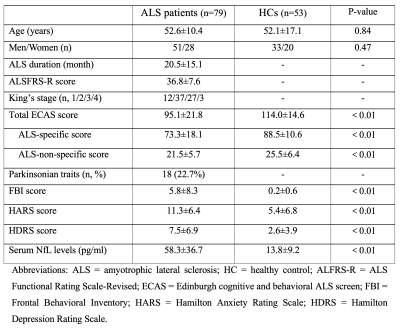 |
Computer Number: 123
2987. Microstructural
changes in striatal subregions in sporadic ALS: links to Motor
and cognitive deficits and serum biomarkers
Y. Yun, S. Liu, J. Xin, Y. Wang, Y. Wu, T. Shen, M. Zhuo, D.
Yu
Qilu Hospital of Shandong University, Jinan, China
Impact: The study revealed notable microstructural
changes in the striatum of ALS patients, emphasizing the
potential of NODDI as a neuroimaging marker.
|
|
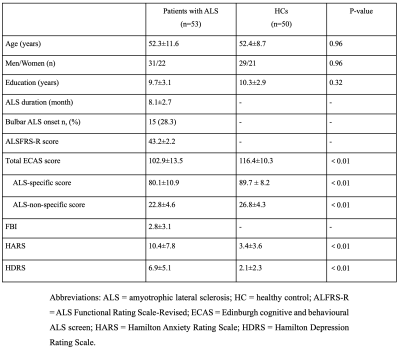 |
Computer Number: 124
2988. Early
extra-motor brain iron accumulation is linked to cognitive
deficits in sporadic early-stage amyotrophic lateral sclerosis
patients
Y. Yun, S. Liu, D. Pylypenko, T. Shen, Y. Wu, Y. Wang, R.
Zeng, D. Yu
Qilu Hospital, Shandong University, Jinan, China
Impact: This study identifies widespread brain iron
accumulation as a hallmark of early-stage ALS, linked to
cognitive decline. Findings highlight QSM’s potential as an
early diagnostic tool and suggest iron metabolism as a
promising therapeutic target.
|
|
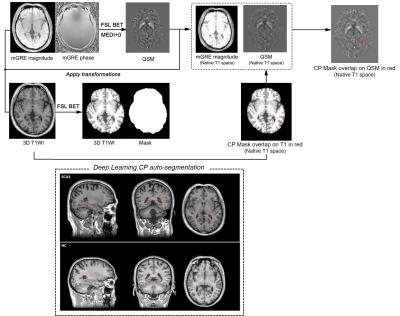 |
Computer Number: 125
2989. Choroid
Plexus Volume and Susceptibility in Spinocerebellar Ataxia Type
3
B. Liu, L. Zhang, X. Li, F. Ren, F. Gao
Shandong Provincial Hospital Affiliated to Shandong First Medical University, Jinan, China
Impact: CP volume may be a novel neuroimaging marker
associated with clinical ataxia severity. Assessing CP
volume and other image profile may be a noninvasive and
easy-to-implement approach for screening disease process in
SCA3 patients.
|
|
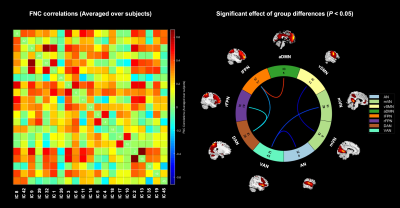 |
Computer Number: 126
2990. Brain
functional alternation in patients with systemic sclerosis: A
resting-state functional magnetic resonance imaging study
X. Tong, H. He, S. Xu, R. Shen, Z. Ning, X. Zeng, Q. Wang,
D. Xu, Z-X He, X. Zhao
Tsinghua University, Beijing, China
Impact: Our study demonstrates the spontaneous activity
and functional connectivity alternations in SSc patients,
which are partially associated with neuropsychiatric
manifestations and tend to aggravate with disease duration.
The results might provide the new insights into the
neuropsychiatric manifestations in SSc.
|
|
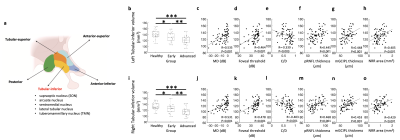 |
Computer Number: 127
2991. Glaucoma
impairs structural and functional integrity of the hypothalamus.
J. W. Bang, C. Parra, K. Yu, H. S. Lee, G. Wollstein, J.
Schuman, K. Chan
New York University Grossman School of Medicine, NYU Langone Health, New York University, New York , United States
Impact: Our findings highlight the potential role of
hypothalamic impairment in glaucoma, suggesting that
structural and functional changes in this brain region may
be associated with the regulation of intraocular pressure
and blood flow—key factors that could influence disease
progression.
|
|
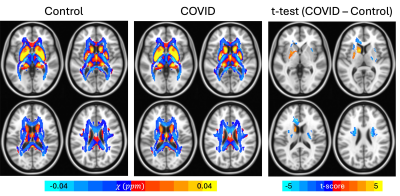 |
Computer Number: 128
2992. Quantitative
susceptibility changes in white matter and subcortical gray
matter in long-COVID
A. Cohen, K. Koch, B. Swearingen, A. Nencka, V. Mathews, Y.
Wang
Medical College of Wisconsin, Milwaukee, United States
Impact: These
results indicate QSM can detect changes related to
persistent COVID symptoms, specifically iron accumulation
and/or myelin damage. Future studies should look at the
longitudinal nature of these changes.
|
The International Society for Magnetic Resonance in Medicine is accredited by the Accreditation Council for Continuing Medical Education to provide continuing medical education for physicians.